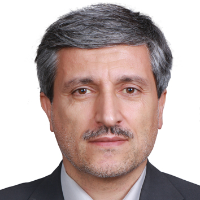Determining Dimensions and Components of Islamic Cities Resilience
Author(s):
Abstract:
Cities are complex and interdependent systems, extremely vulnerable to threats from both natural hazards and terrorism. Attributes, which makes cities desirable and attainable, such as architectures, population concentration centers, deployment of urban areas and elements, interdependent infrastructures and others, expose them to high risk of natural disasters and manmade incidents. Some cities, despite of their adaptation capacity with surrounding changes, have long experience to acceptance of residents and continuity of operations. Beside that there were some cities in first millennium of BC that are not so important these days, such as Neyshabour, Iran and Kardouba, Spain. On the other hand, some Islamic cities such as Cairo, Istanbul, Baghdad and Tabriz was considered as one of the big cities in the world and despite of different incidents, they continue to their operations and living due to their changing in needs, functions and operations. These cities because of their sustainable and resistance networks of physical systems and communities, can adapt themselves to different incidents and disasters. Nowadays, although there is a lot of research about the conception of resilient city, there are few systematic rules in resiliency that have been applied in city scale. Subcommittee on Disaster Reduction has defined the resiliency as “the capacity of a system, community, or society potentially exposed to hazards to adapt, by resisting or changing, in order to reach and maintain an acceptable level of functioning and structure.” This is determined by the degree to which the social system is able to organize itself to enhance its capacity from previous experiences to better future protection and to improve risk reduction measures.At this article, systematic approach of capacity evaluation model is used. It tries to determine proposed components and dimensions of Islamic resilient cities by presentation of connection between resiliency, vulnerability and adaptation capacity and also studied frameworks and models around the world.
Keywords:
Language:
Persian
Published:
Journal of Studies On Iranian - Islamic City, Volume:3 Issue: 9, 2013
Page:
113
magiran.com/p1215942
دانلود و مطالعه متن این مقاله با یکی از روشهای زیر امکان پذیر است:
اشتراک شخصی
با عضویت و پرداخت آنلاین حق اشتراک یکساله به مبلغ 1,390,000ريال میتوانید 70 عنوان مطلب دانلود کنید!
اشتراک سازمانی
به کتابخانه دانشگاه یا محل کار خود پیشنهاد کنید تا اشتراک سازمانی این پایگاه را برای دسترسی نامحدود همه کاربران به متن مطالب تهیه نمایند!
توجه!
- حق عضویت دریافتی صرف حمایت از نشریات عضو و نگهداری، تکمیل و توسعه مگیران میشود.
- پرداخت حق اشتراک و دانلود مقالات اجازه بازنشر آن در سایر رسانههای چاپی و دیجیتال را به کاربر نمیدهد.
In order to view content subscription is required
Personal subscription
Subscribe magiran.com for 70 € euros via PayPal and download 70 articles during a year.
Organization subscription
Please contact us to subscribe your university or library for unlimited access!


